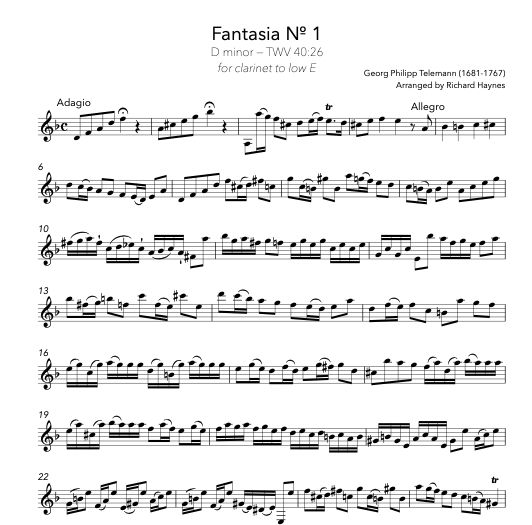As you may know, I’ve recently acquired a clarinet d’amore. I’ve used the term modern in the title here, because for the most part the clarinet d’amore didn’t undergo a process of modernisation in the course of the 20th century, like many other clarinets. Clarinets d’amore were built in various pitches but the majority of them were in G, as was the alto clarinet of the 18th century.
There were some particularly unhelpful aspects of some historical d’amores, for example small tone holes or a mouthpiece smaller than that of a modern e-flat clarinet, that made some instruments useless in a large hall. Then again the instrument did come about at a time when house concerts and chamber music were en vogue, and arguably fell into disregard as the requirements of instruments in the romantic era, meant that they had to have bigger sounds which was a trend that continued well into the 20th century, even into the 21st. Upon my request, the Bamberg-based clarinet makers Schwenk & Seggelke decided to create an instrument that would satisfy the sonic characteristics of a clarinet d’amore whilst keeping in mind the fact that the instrument would be played in large halls and ensembles.
The mouthpiece
On a small bore clarinet d’amore or basset horn using a regular B-flat clarinet mouthpiece works well, however these can be adjusted to optimise the sound in the lowest register. I have two mouthpieces that I only use on clarinet d’amore, which are slightly widened versions of the two mouthpieces I use on B-flat clarinet.
The bore, taper and flare
Following on from angled barrels between 62 and 64mm in length, the bore of the upper and lower joints moves between 15 and 16mm diameter, maintaining the clarinet’s hourglass taper however the flare towards the bell does not exceed the bore diameter of the upper joint. This narrow end of the lower joint maximises the sonic impact of the type of bell on the whole instrument. If you take a look at your B-flat or A clarinets, you’ll notice a large flare that begins in the lower joint, continuing on through the bell, affording the typical glowing clarinet sound. The diameter of the bore where the lower joint meets the bell can be almost twice as wide as the average bore diameter of the instrument. The lack of this degree of flare is another characteristic of the clarinet d’amore that sets it apart from other soprano instruments and confirms its place in the family of large size clarinets.
The bell
The most obvious visual difference between the clarinet d’amore and other soprano clarinets (besides the angled barrel and overall length) is the globular bell, Liebesfuss, or pavillon d’amour. This is another aspect of the instrument’s construction contributing to its covered sound. Unlike a standard Boehm clarinet, and as mentioned before, there is no bore flare on the approach to the bell, which means that the air column and resulting sound is greatly affected by the shape of the bell. This ensures the covered d’amore sound is created whilst using the Liebesfuss.
If you would like to delve further into this instrument, here is some more material:













Richard Wagner’s Lohengrin is an opera that was completed in 1848 and is scored for a large orchestra, stage musicians and of course, singers. The clarinet section comprises four parts: 1st, 2nd, 3rd and bass clarinets. The 1st and 2nd parts double on A, B-flat and C instruments. The 3rd on A and B-flat. The bass clarinet part is written in A and B-flat.